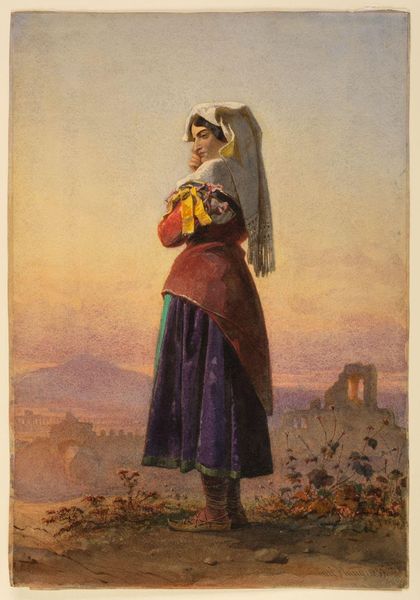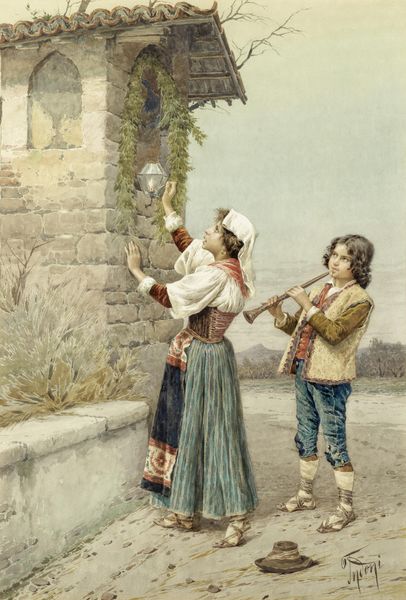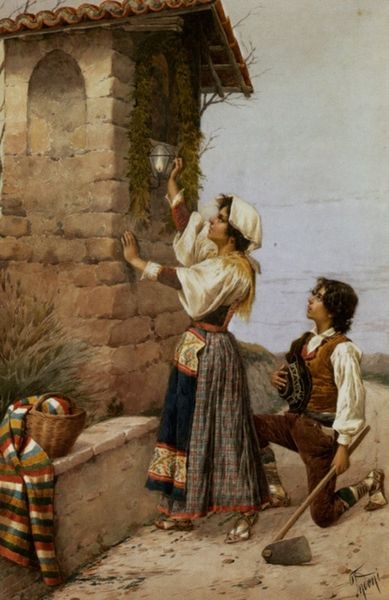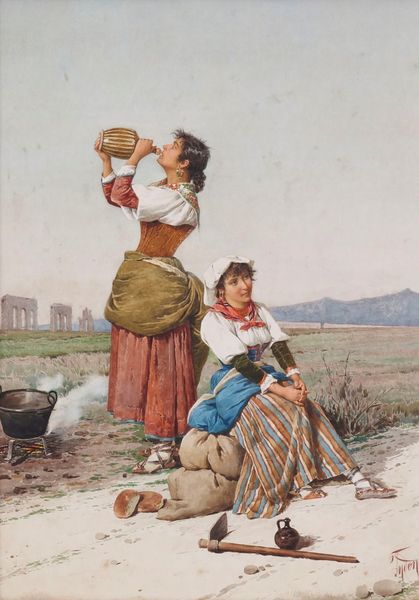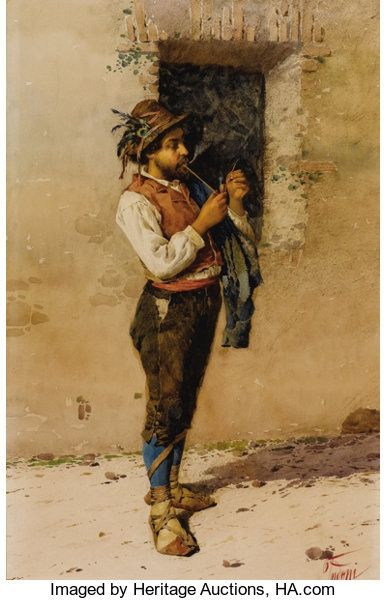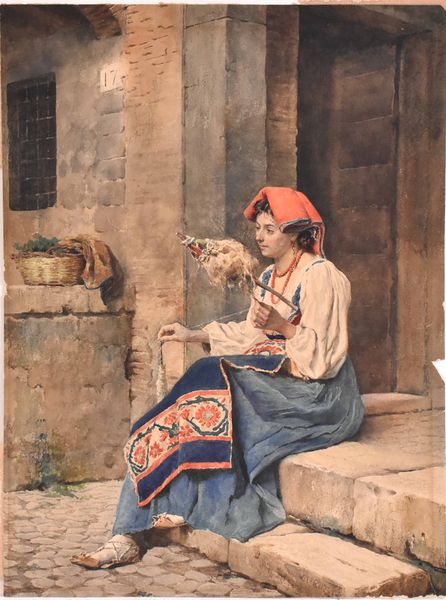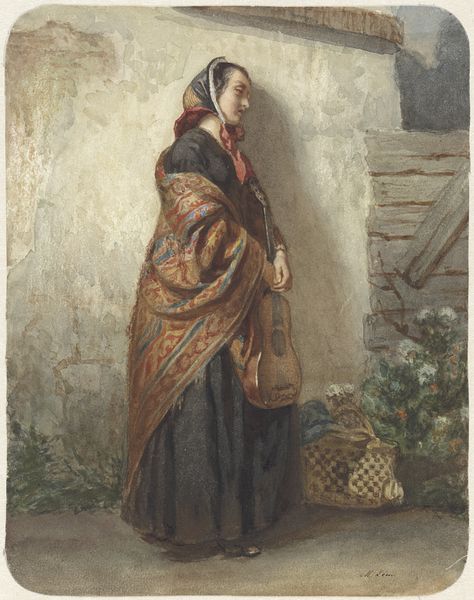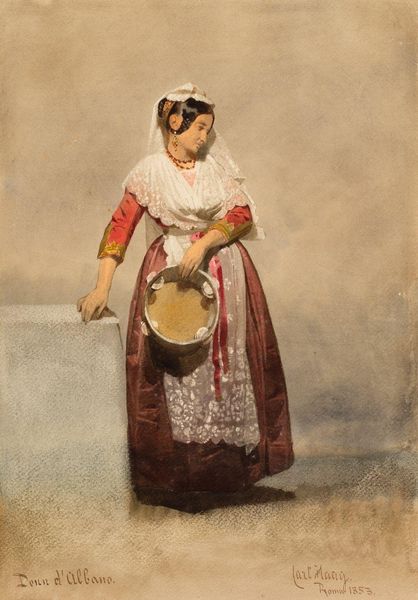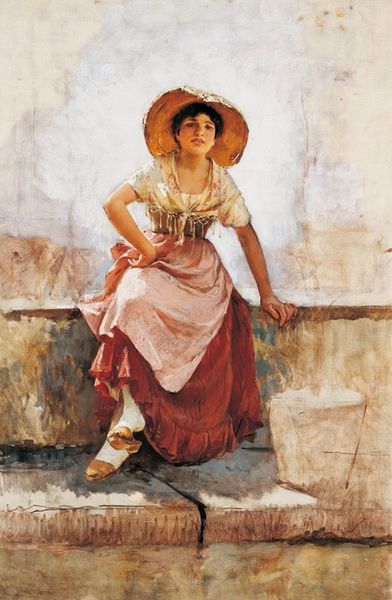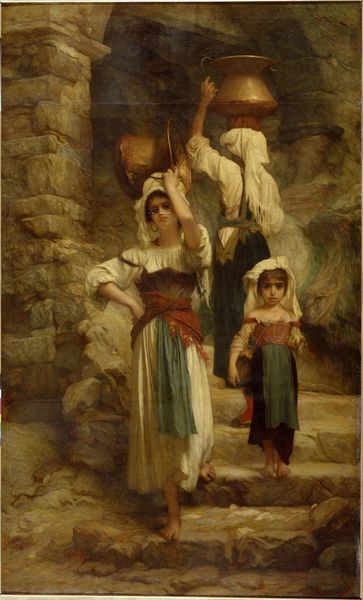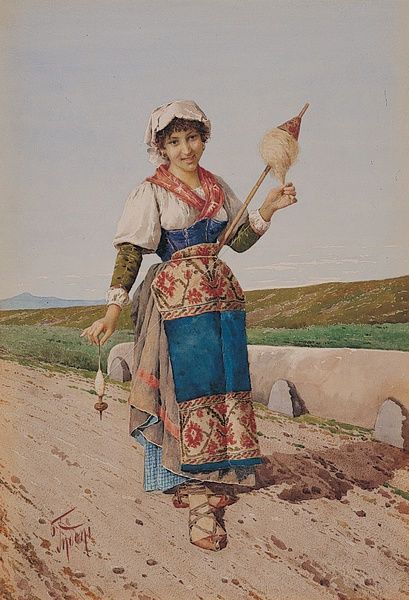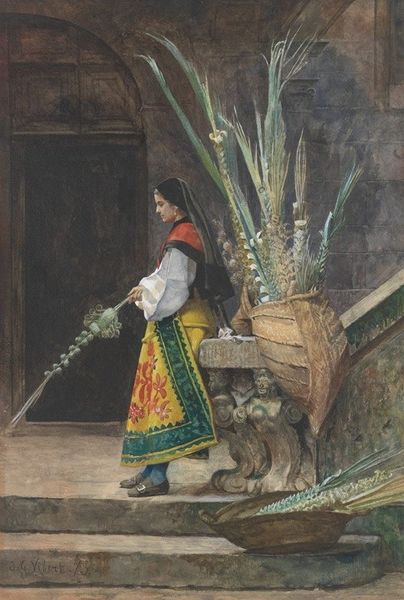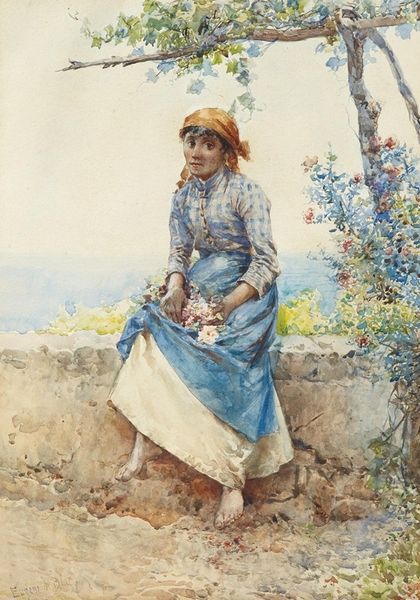
Copyright: Public domain
Editor: This watercolor, gouache and coloured pencil work, titled "A Roman water carrier," was painted by Carl Haag in 1857. The textures created with these materials evoke such detail, such that I immediately wonder about the sitter’s life and labor. What do you see in this piece? Curator: The vessel she balances acts as a potent symbol, evoking not only the necessity of water but also its sacred properties within Roman culture and beyond. Water is life, purification, and a connection to the divine, especially for women as keepers of the home and providers of life’s sustenance. Consider also the church in the background, contrasted with the pagan weight of the water jar. Do you notice the tensions present between Christian and older belief systems that could influence her identity? Editor: Yes, that's really insightful! And how the architecture seems to box her into this small space? So the costume… is that romanticizing or realistically portraying her daily life, her burdens, her hopes? Curator: Exactly. Haag uses Romanticism to tap into an existing well of the Italian picturesque, using realism to enhance and ground that fantasy. She embodies not just her immediate circumstance, but centuries of tradition, and the push-pull of secular and spiritual concerns in nineteenth-century Italy. The garment suggests an ancient folk custom preserved in the new century. Do you perceive that tension? Editor: I do now! So much more than just a pretty picture. It's like she carries the weight of history, along with that water jar. Curator: Indeed! Haag’s composition uses one woman's shoulders to ask about faith, labor, and time. A potent blend of observation and enduring symbols.
Comments
No comments
Be the first to comment and join the conversation on the ultimate creative platform.
